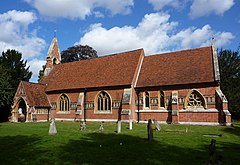
Masham is a market town and civil parish in North Yorkshire, England. It had a population of 1,205 at the 2011 census.

Lythe is a small village and large civil parish, in North Yorkshire, England, situated near Whitby within the North York Moors National Park. The name of the village derives from Old Norse and means hill or slope.

Sewerby is a village in the East Riding of Yorkshire, England approximately 1 mile (1.6 km) north-east of Bridlington on the North Sea coast. The village is on Bridlington Bay and is the only south-facing resort in the East Riding of Yorkshire.
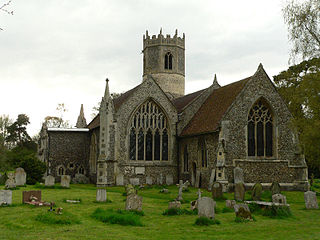
Rickinghall Inferior is a civil parish in the Mid Suffolk district of Suffolk, England. According to the 2011 census there were 233 males and 216 females in this civil parish, for a total population of 449. It includes the western part of the village of Rickinghall and is adjacent to the village and parish of Wattisfield. The old road from the market town of Bury. St Edmunds to the City of Norwich and the town of Great Yarmouth passes through the centre of the village but the new road, the A143, uses a by-pass to the East.

East Langton is a village and civil parish in the Harborough district of Leicestershire, England.
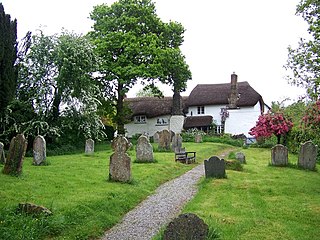
Ashton is a civil parish in the Teignbridge district of Devon, England. According to the 2001 census it had a population of 174, and it had a population of 203 according to the 2011 census. The parish consists of two villages, Higher Ashton and Lower Ashton, and is on the edge of the Dartmoor National Park. The France Brook flows through most of Ashton just south of its main road, and along Ashton's eastern boundary flows the River Teign. The parish is located approximately 13 km north of Newton Abbot, and roughly 10 km to the south west of its nearest city, Exeter. Historically, Ashton has primarily been based inside the agricultural sector, but one of its most notifiable landmarks is the St John the Baptists church located in the Higher Ashton district.

Bolton Percy is a village and civil parish in the Selby District of North Yorkshire, England. According to the 2001 census it had a population of 305 in 115 households, reducing marginally to 304 at the 2011 census. The village is about 4 miles (6.4 km) east of Tadcaster.
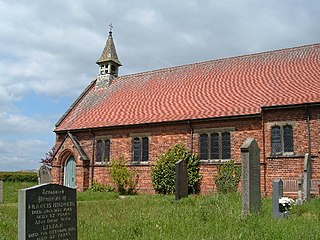
Hessay is a village and civil parish in the unitary authority area of the City of York, in the ceremonial county of North Yorkshire, England 4.7 miles (7.5 km) west of York.

Thorganby is a small village and civil parish in North Yorkshire, England. It was historically part of the East Riding of Yorkshire until 1974, but from 1974 to 2023 was in the Selby District of the shire county of North Yorkshire. In 2023 the district was abolished and North Yorkshire became a unitary authority.

Parham is a village and civil parish in the East Suffolk district of Suffolk in eastern England. Located seven miles north of Woodbridge, in 2005 it had a population of 300, reducing to 263 at the 2011 census and according to the 2011 census there were 129 males and 134 females living at this time.
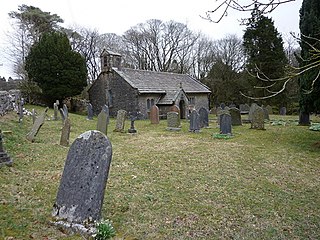
Chapel-le-Dale is a hamlet in the civil parish of Ingleton, North Yorkshire, England. It is in the Yorkshire Dales National Park in a valley of the same name, and was previously in the West Riding of Yorkshire.

Salton is a village and civil parish in North Yorkshire, England. The population of the village at the 2011 census was 110, but the details can be found listed in the civil parish of Edstone.

Flixton is a village in North Yorkshire, England. Until 1974 the village lay in the historic county boundaries of the East Riding of Yorkshire and from 1974 to 2023 it was part of the Borough of Scarborough. There is a public house, the Foxhound Inn.

Elmsted is a village and civil parish in the Folkestone and Hythe District of Kent, England. It is located west of Stone Street, the Roman road which today takes traffic between Canterbury and Lympne. Within the parish are the settlements of Bodsham, North Leigh and Evington. There are six elected members of the Parish Council.

Great Mitton is a village and a civil parish in the Ribble Valley, Lancashire, England. It is separated from the civil parish of Little Mitton by the River Ribble, both lie about three miles from the town of Clitheroe. The combined population of both civil parishes at the 2011 census was 266. In total, Great and Little Mitton cover less than 2000 acres of the Forest of Bowland, making it the smallest township in the Forest. Historically, the village is part of the West Riding of Yorkshire, but was transferred to Lancashire for administrative purposes on 1 April 1974, under the provisions of the Local Government Act 1972.

Great Henny is a village and civil parish in the Braintree district in the county of Essex, England. Nearby settlements include the villages of Little Henny and Twinstead and the Suffolk market town of Sudbury. The hamlet of Henny Street, within the parish, is on the River Stour which forms the parish's eastern border. It shares a parish council with Little Henny and Twinstead called "Hennys', Middleton & Twinstead".

Little Henny is a hamlet and civil parish in the Braintree district in the county of Essex, England. It shares a parish council with Great Henny and Twinstead called "Hennys', Middleton & Twinstead". It is near the town of Sudbury in Suffolk. In 2001 the parish had a population of 48.

Radwinter is a village and a civil parish on the B1053 road, in the Uttlesford district of the county of Essex, England. The population in the 2011 census was 612 with 306 males and 306 females living in the parish. At re centre of the village is the 14th-century church dedicated to St Mary the Virgin, and a primary school. The village has four outlying hamlets in the district of Uttlesford, between the market town of Saffron Walden (Essex) and Haverhill (Suffolk).

Dorsington is a village and civil parish in the Stratford-on-Avon district, in the county of Warwickshire, England. Dorsington was in Gloucestershire until 1931, when it was transferred to Warwickshire. It is located 2¾ miles west of Milcote railway station. The place-name 'Dorsington' is first attested in an Anglo-Saxon charter of 710, where it appears as Dorsintone. It is recorded in the Domesday Book of 1086 as Dorsintune. The name means 'the town or settlement of Deorsige's people'. In the 2001 census, it had a population of 138. By the 2011 Census, the population had increased to 150. The parish church of St Peter's is a Grade II* listed building built in 1764–1768. Dorsington was the original centre of the Heart of England Forest, begun by the businessman and philanthropist Felix Dennis.

Marton cum Grafton is a civil parish in the Borough of Harrogate of North Yorkshire, England. The parish has only two settlements, and has a magnesian limestone and sandstone geography, which has been used for quarrying. The landform is broadly flat, though there are some small hills with the Marton and Grafton being separated by 98 feet (30 m) despite being only 0.5 miles (0.8 km) apart.
